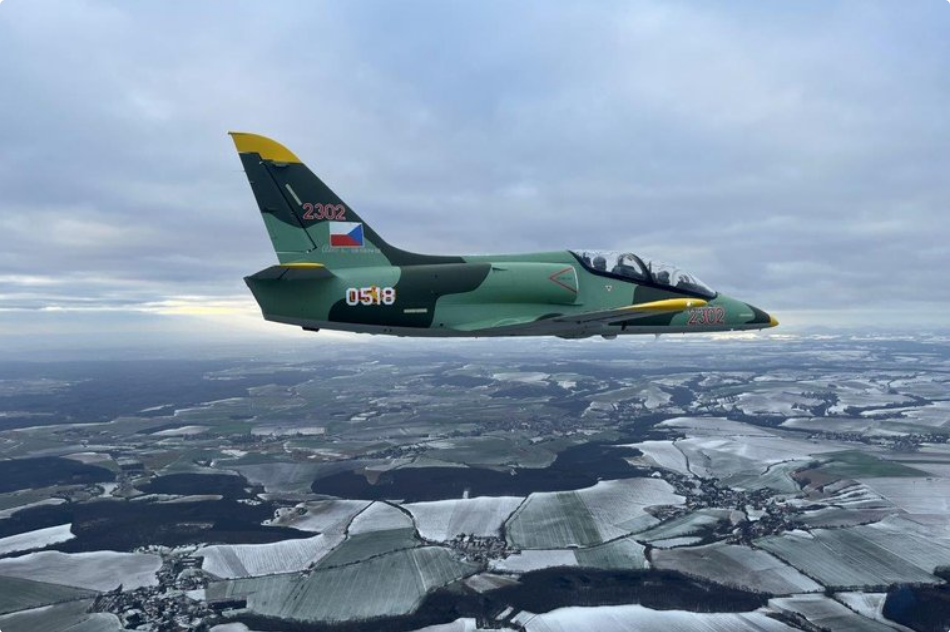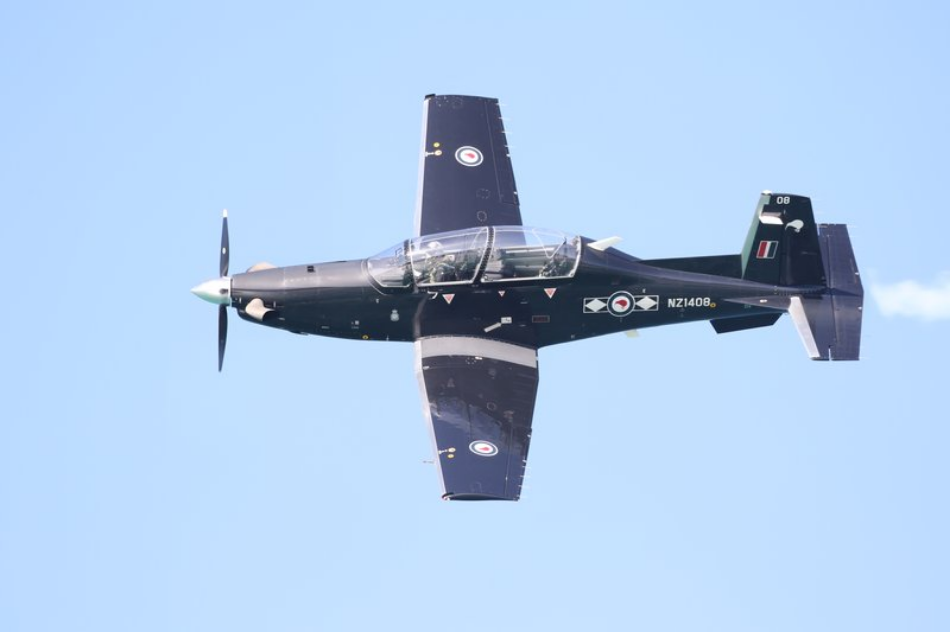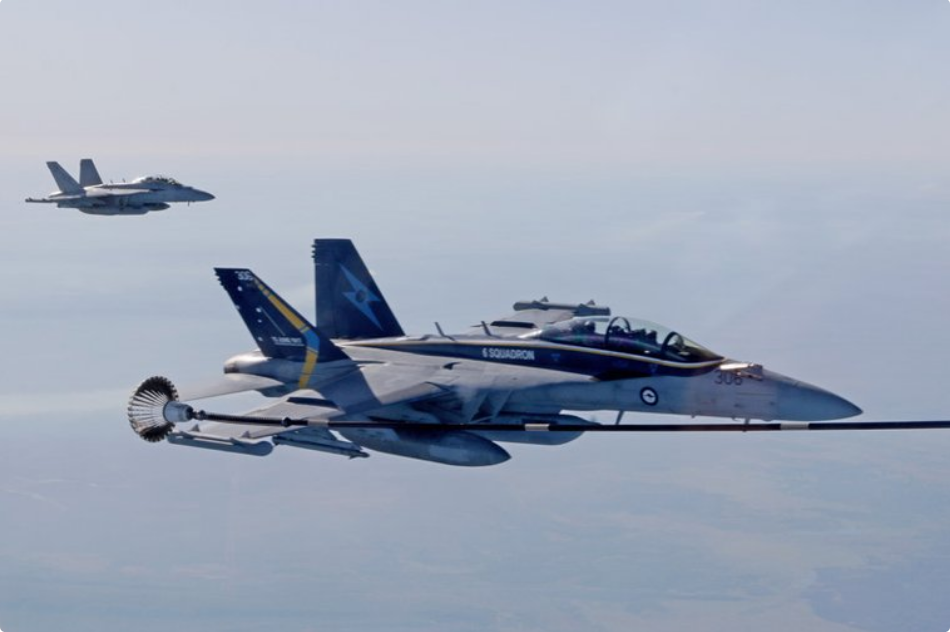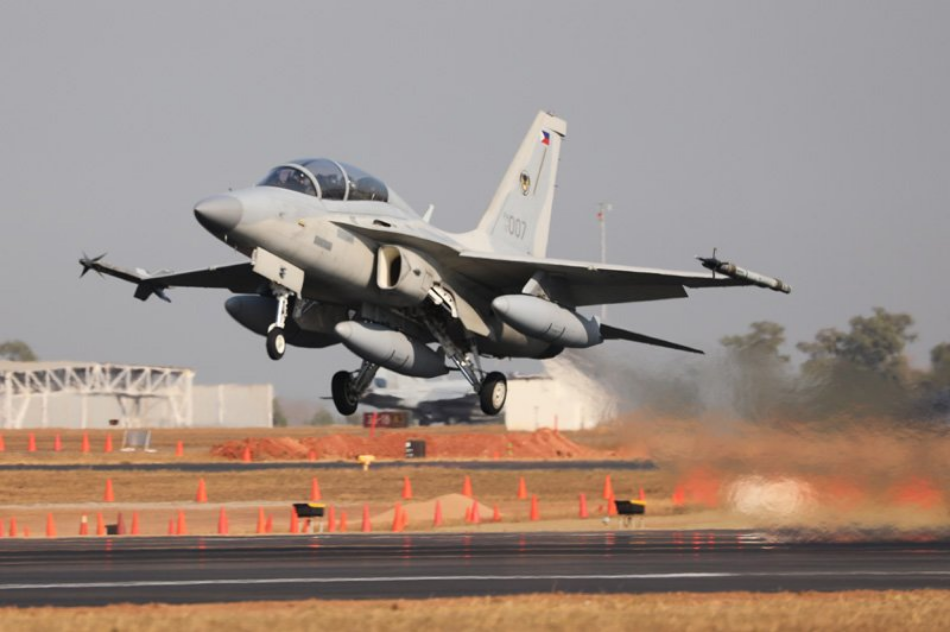
Report home > News
OCTOBER 2024 | technology report | Military Training
by Gordon Arthur
The 12 L-39NGs jet trainers ordered by Vietnam will replace the country’s fleet of L-39C Albatros jets.
Above: Vietnam recently received its first batch of six L-39NG trainer jets from the Czech Republic. (Photo: Aero Vodochody)
The Vietnam People’s Air Force (VPAF) formally accepted six L-39NG jet trainers from Czech firm Aero Vodochody in August. The force has also been awaiting delivery of its first T-6C Texan II trainer aircraft from the US.
Vietnam has been the launch customer for this latest L-39 variant. Aero Vodochody said earlier this month that the L-39NGs’ site acceptance tests had been successfully passed. Around 10 employees helped verify their functionality and performed test flights in country.
Victor Sotona, CEO and chairman of the board for Aero Vodochody, commented: “I’m extremely pleased that the final assembly and flight of the six L-39NGs went well and our aircraft can now fully serve as a training platform for fighter pilots, as well as a tactical platform fulfilling a wide range of missions for the Vietnam People’s Air Force.”
The delivery marked the first batch of aircraft stemming from a contract for 12 L-39NGs and a simulator system lodged with Omnipol, the owner of Aero Vodochody, in February 2021. The remaining six aircraft will be expected to be delivered before the end of this year.
The new jets will be operated by the 1st Squadron of the 910th Air Training Regiment, a unit belonging to the Air Force Officer School located at Dong Tac Air Base.
Around 65% of the L-39NG’s components will be manufactured by Czech companies, with the OEM stating each aircraft requires 31,000 hours of labour and approximately 14,000 parts.
The L-39NG is powered by a Williams International FJ44-4M turbofan. Two Genesys Aerosystems avionics configurations have been made available, depending on whether the customer has Eastern or Western preferences. With Russia the foremost supplier of military equipment to Vietnam, its L-39NGs have the former configuration.
Above: The Vietnam People’s Air Force has been awaiting delivery of 12 T-6C Texan II trainers similar to this example from New Zealand. (Photo: Gordon Arthur)
The aircraft will replace a fleet of 24 incumbent L-39C Albatros jets. They also supplement 12 Yak-130 advanced trainers delivered from November 2021 onwards. The L-39NG can serve as an intermediate jet trainer, while Yak-130s of the 940thRegiment stationed at Phu-Cat are lead-in fighter trainers also able to perform the ground attack role.
Vietnam’s fighter fleet relies on Su-27 and Su-30MK2V aircraft, but the VPAF needs to replace approximately 30 Su-22 fighter-bombers received from Russia in the 1980s. Hanoi must decide whether to stick with traditional benefactor Russia or transition to a Western supplier.
The US lifted a weapons ban on sales to Vietnam in 2016 paving the way for the purchase of T-6C Texan II trainers. Brigadier General Sarah Russ of the US Pacific Air Force said in 2022 that the US would supply 12 trainers from 2024–27.
Data from the US DoD revealed that a US$43.8 million contract for three T-6Cs, between US Air Force Command and Textron Aviation Defense, was announced on 12 August 2022. Work on the deal will be completed by late September this year suggesting delivery of the initial aircraft trio is imminent.
A $31 million tranche 2 deal for a second batch of three Texan IIs was awarded on 30 August 2023. Then, on 29 September 2023, a tranche 3 contract worth $31.8 million was awarded for this building partnership capacity programme. Work is to be completed within three years.
Latterly, Textron was awarded a $29.3 million contract for three final T-6Cs on 31 May this year. This tranche 4 work will conclude by 30 September 2026, with the project having a cumulative value of $137.6 million.
Once delivered, these new aircraft are expected to be assigned to the 920th Training Regiment, replacing elderly Yak-52 trainers.
Next article below > Australia’s ‘Top Gun’ exercise in Top End reaches unprecedented scale in face of Chinese military build up
OCTOBER 2024 | technology report | Military Training
by Gordon Arthur
Fast-jet exercise focuses on interoperability and cooperation between allies amid growing regional security concerns in the Asia-Pacific region.
Above: EA-18G Growlers of the RAAF refuel from an Australian MRTT in the sky over the Northern Territory. (Photo: Gordon Arthur)
Exercise Pitch Black, the biennial fast-jet exercise which has been held in Australia for the past 43 years, is currently undertaking the largest event in the series’ history.
The 2024 iteration, being held from 12 July until 2 August, has boasted more than 140 aircraft and some 4,435 personnel from 20 countries.
The Australian-led exercise has enlarged in size and scope over time, correlating with the perceived threat to Asia-Pacific regional security from China’s massive military build up.
Responding to a query from Shephard on the geo-political aspect of Pitch Black 2024, Gp. Cpt. Gary Sadler of the Royal Australian Air Force (RAAF) explained: “There isn’t a particular threat, if you like, that we’re trying to address. [But] in terms of the strategic challenges around the globe at the moment, we certainly acknowledge those when we’re talking about the activities that we’re trying to look out for in the exercise.
“And while they may have a broad shaping effect, there’s no specific activity within the exercise per se,” he claimed.
Sadler emphasised that the purpose of the exercise was “really around making sure that we can interoperate and cooperate in terms of safe and professional aviation operations”.
The exercise, which was been designed to boost interoperability among “like-minded nations”, is being conducted in airspace over northern Australia, primarily using RAAF Base Darwin and RAAF Base Tindal. Air-to-air tankers have also been based at RAAF Base Amberley near Brisbane, however, because ramp space has become a precious commodity in the Northern Territory with so many aircraft involved in the exercise.
The following nations dispatched aircraft: Australia, France, Germany, India, Indonesia, Italy, Japan, Malaysia, Papua New Guinea, the Philippines, Singapore, South Korea, Spain, Thailand, the UK and the US. Additionally, Brunei, Canada, Fiji and New Zealand contributed personnel or observers.
Notable has been the heavy European presence – specifically France, Germany, Italy, Spain and the UK – with these five nations representing nearly a third of the aircraft-contributing nations. Despite Europe’s own security concerns revolving around Russian aggression against Ukraine, the major commitment from European nations reflected their mounting worry about security in the Indo-Pacific region.
Three of the European countries, namely France, Germany and Spain, have joined forces under a deployment known as Pacific Skies 24. This major deployment has seen aircraft from these three countries – which incidentally are partners in the Future Combat Air System programme – moving progressively through Alaska, Hawaii, Japan, Australia and India.
The Luftwaffe noted: “Through joint training, the partners will increase their operational capability and prove that, in an emergency, they will be able to enforce the principles of a rules-based international order.”
Above: The Philippine Air Force sent four FA-50PH fighters to Pitch Black 2024, marking the type’s first overseas exercise. (Photo: Gordon Arthur)
Perhaps surprisingly, US participation was limited to just six F-22A Raptors, this marking their debut in a Pitch Black exercise. Lt. Col. Ty Bridge, deputy chief for the Exercises Division of Headquarters, US Pacific Air Forces, said that other Indo-Pacific Command exercises focused on strategic messaging and US posture, and that this was not the intent of Pitch Black.
Bridge pointed out: “Pitch Black allows us to focus on [our] allies and partners, and interoperability. [It] allow us to be able to plan in other venues and other times to be able to work with those other countries focusing on deterrence and a free and open Indo-Pacific.”
By bringing fewer of its own aircraft, the US maximised the participation of other nations, Bridge told Shephard.
Four countries made a maiden appearance at this year’s exercise: Italy, Papua New Guinea, the Philippines and Spain.
Significantly, this was the first time the Philippine Air Force (PAF) had sent FA-50PH light fighters overseas for training, and it was also the first time it had participated in large force elements.
Col Randy M. Pascua, contingent commander of the PAF, said: “For us, this is not a preparation for anything that’s happening in our country. Our main purpose for being here is to develop our operational capability, focusing on the development of the skills of the fighter pilots, as well as the maintenance which is necessary when we get the higher level of aircraft – the multirole fighter.”
Pascua was referring to the extant requirement for new multirole fighters for the Philippines, with the choice having been narrowed to either the F-16 or Gripen, although no decision has yet been announced.
Also significant about this year’s exercise has been the involvement of the Italian aircraft carrier Cavour. This is the first time that naval aviation has contributed to Pitch Black, with the carrier accommodating Italian Navy AV-8B and F-35B fighters, as well as Spanish Navy EAV-8Bs.
The Northern Territory holds strategic importance for Australia, with April’s National Defence Strategy document listing improvements in the ability to operate from northern bases as one of six priorities for the nation’s military. This geographic emphasis has been reflected in infrastructure development at both the Darwin and Tindal bases. At the latter, for example, new aprons are being constructed to accommodate US Air Force B-52 bombers.
Summing up Pitch Black 2024, Sadler of the RAAF concluded: “Bringing all these countries together is about the shared values that we have for security, stability, peace and prosperity in the region for all participants. I think this sort of activity reflects the commitment to transparency, to make sure that everybody is fully aware about what we’re trying to achieve and how we’re going about it.”



